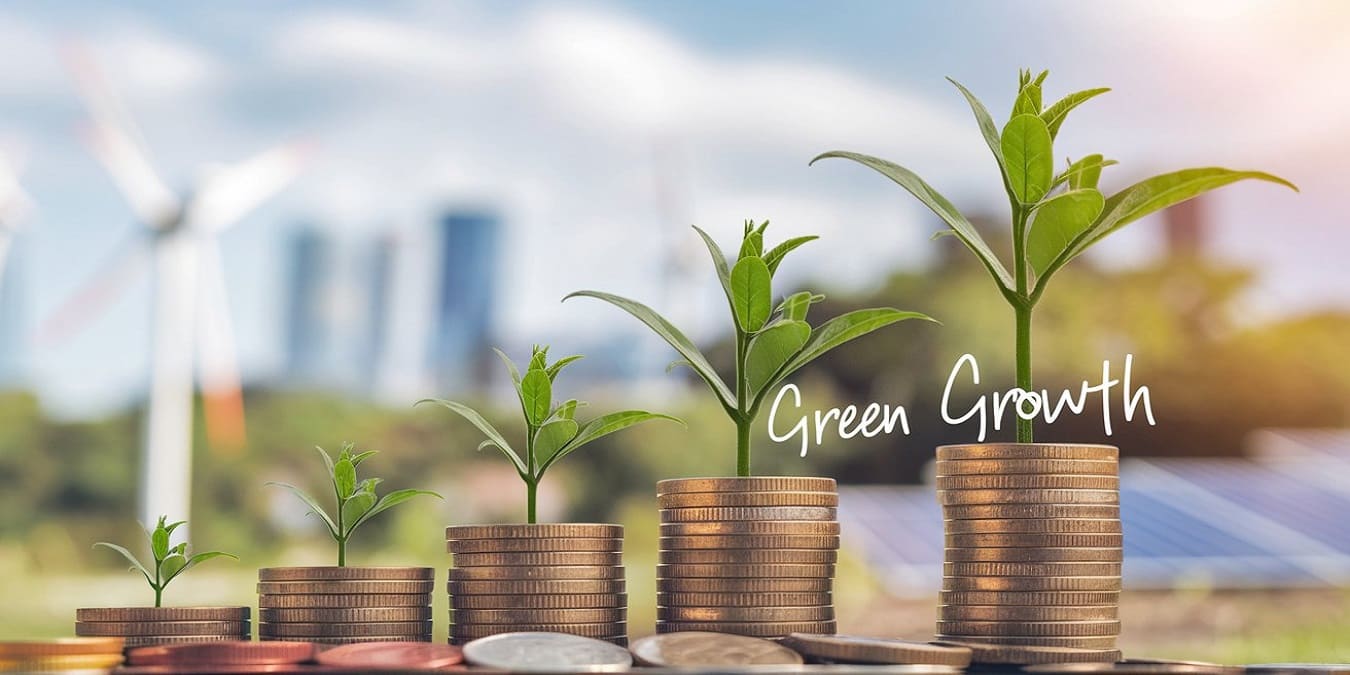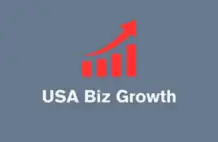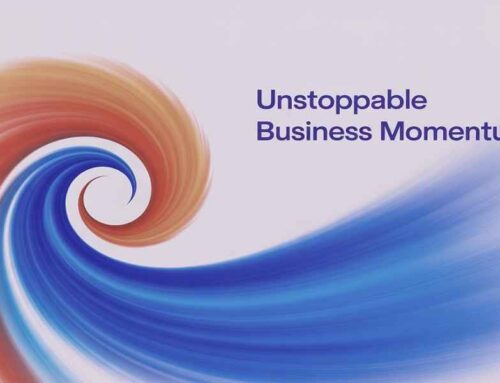
Green Growth: Profitable Sustainability Strategies
Imagine a world where businesses thrive not despite their environmental commitments, but because of them. Welcome to the era of green growth – where profitability and sustainability aren’t just compatible, they’re inseparable partners in success.
As we stand at the crossroads of climate crisis and economic opportunity, it’s crucial to recognize that sustainable development isn’t just a moral imperative; it’s a business necessity.
The numbers speak for themselves: companies embracing green growth strategies have outperformed their peers by 15% annually over the past decade. Are you ready to join this revolution?
Let’s face it – traditional business models are like gas-guzzling cars on a highway to nowhere. They might get you there eventually, but at what cost? In contrast, green growth represents the sleek electric vehicle of business strategy: efficient, forward-thinking and built for the long haul.
But here’s the million-dollar question: How can your organization transform its approach while maintaining profitability? The answer lies in implementing smart sustainability strategies that don’t just check boxes but create real value.
The urgency couldn’t be clearer. We’re witnessing unprecedented environmental challenges while simultaneously facing immense pressure to maintain economic growth. This is where green growth comes in, offering a path that doesn’t force us to choose between our planet and our profits.
By integrating eco-friendly practices into core business operations, companies are discovering new revenue streams, reducing costs and building stronger relationships with increasingly conscious consumers. Isn’t it time your business joined this winning team?
Understanding Green Growth: Beyond Buzzwords
So, what exactly does “Green Growth” mean in practical terms? At its core, it’s about achieving economic expansion while simultaneously reducing environmental risks and ecological scarcities. Think of it as a sophisticated dance between progress and preservation, where every step forward is carefully choreographed to minimize environmental impact.
Unlike traditional growth models that view environmental protection as a costly afterthought, green growth sees sustainability as the main event – the engine driving innovation and competitive advantage.
Consider the remarkable transformation of Interface, the global carpet manufacturer. Their journey from conventional production to becoming a zero-waste company demonstrates how green growth principles can revolutionize entire industries. By reimagining their manufacturing process, they reduced waste by 88% while increasing profits by 40%.
Or take Patagonia’s approach – their Worn Wear program not only extends product life cycles but has created a loyal customer base willing to pay premium prices for sustainable products. These aren’t isolated success stories; they represent a fundamental shift in how businesses operate.
The beauty of green growth lies in its adaptability across sectors. From tech giants powering data centers with renewable energy to agricultural companies implementing precision farming techniques, the applications are endless. It’s not about sacrificing growth for sustainability or vice versa; it’s about recognizing that these goals are mutually reinforcing.
When implemented effectively, green growth strategies can unlock hidden efficiencies, foster innovation and open doors to entirely new markets. The question isn’t whether your business can afford to embrace green growth – it’s whether you can afford not to.
Profitable Pathways: Strategic Sustainability in Action
Let’s dive into the meat-and-potatoes of making sustainability work for your bottom line. First up: resource efficiency – the low-hanging fruit of profitable sustainability strategies. Take Unilever’s example: by optimizing water usage in their factories, they’ve saved over €700 million since 2008.
Small changes in material sourcing can yield big results too. Switching to recycled packaging might seem daunting, but when Dell started using ocean-bound plastics in their products, they reduced costs by 10% while enhancing brand loyalty. Isn’t it amazing how doing good can also be good business?
Energy management presents another golden opportunity. IKEA didn’t become the world’s largest user of solar panels by accident. Their investment in renewable energy saves them millions annually while powering nearly all their stores with clean energy.
Even smaller businesses can capitalize on energy efficiency – simple LED lighting upgrades typically pay for themselves within two years. And let’s not forget waste reduction: Subaru’s zero-landfill initiative hasn’t just earned them environmental accolades; it’s cut operational costs by 30%. Can you imagine what similar initiatives could do for your organization?
But perhaps the most exciting aspect of sustainability strategies lies in product innovation. Companies that rethink their offerings through an eco-conscious lens often discover unexpected market opportunities. Method Home Products’ plant-based cleaning solutions command premium prices while costing less to produce than traditional chemical cleaners.
Similarly, Tesla’s battery technology breakthroughs have created multiple revenue streams beyond just car sales. These examples demonstrate that true innovation often emerges when environmental constraints are viewed as creative challenges rather than limitations.
Supply chain optimization completes our quartet of profitable sustainability strategies. Walmart’s Project Gigaton aims to reduce supply chain emissions by one billion metric tons – a move that’s projected to save suppliers $1 billion annually.
Localizing production where feasible can dramatically cut transportation costs while appealing to eco-conscious consumers. And digital transformation plays a crucial role too; real-time tracking systems can reduce inventory waste by up to 40%. The key takeaway? Sustainable practices aren’t just feel-good measures; they’re smart business decisions that drive tangible financial benefits.
Challenges and Solutions: Navigating the Green Transition
Now, let’s address the elephant in the room: transitioning to green growth isn’t always smooth sailing. One of the biggest hurdles companies face is the initial investment required for sustainable infrastructure. Retrofitting facilities, upgrading equipment or developing eco-friendly products can seem prohibitively expensive.
However, innovative financing solutions are emerging to bridge this gap. Green bonds, for instance, have grown from $2 billion in 2012 to over $500 billion today, offering attractive interest rates for sustainability projects. Additionally, many governments provide tax incentives and grants that can significantly offset upfront costs.
Employee resistance often presents another significant challenge. Workers may fear job losses or struggle with new processes. The solution lies in comprehensive training programs and clear communication about how green initiatives create new opportunities rather than eliminate existing ones.
Schneider Electric’s successful transition involved reskilling thousands of employees, resulting in a workforce that’s now 90% focused on sustainable solutions. Their experience shows that investing in people is just as crucial as investing in technology.
Market dynamics pose their own set of challenges. Competitors may initially undercut prices while you’re investing in sustainable practices. To counter this, focus on building strong relationships with environmentally conscious consumers who are willing to pay premium prices for authentic sustainability efforts.
Certification programs and transparent reporting can help build trust and justify price premiums. Remember, today’s consumers are more informed than ever – they can spot greenwashing from miles away.
Regulatory uncertainty can also create anxiety about long-term investments in sustainability. Rather than waiting for regulations to catch up, proactive companies are getting ahead of the curve.
Engaging with policymakers, participating in industry coalitions and adopting international standards can help shape future regulations while providing stability for current investments. Plus, being an early adopter often positions companies favorably when regulations do come into effect.
Perhaps the most persistent challenge is maintaining momentum during difficult economic times. Here’s where integrated sustainability strategies shine brightest. Companies that weave environmental considerations into their core business model find that these practices become natural cost-saving measures during downturns.
For example, energy-efficient processes continue saving money regardless of market conditions, while waste reduction measures protect profit margins when times get tough. The key is viewing sustainability not as a separate initiative but as an integral part of business resilience.
Future Forward: Harnessing Emerging Opportunities
As we look toward the horizon, several transformative trends are reshaping the landscape of green growth and sustainability strategies. Artificial Intelligence (AI) stands at the forefront, revolutionizing how companies approach environmental challenges.
Machine learning algorithms are optimizing energy consumption patterns in real-time, predicting maintenance needs before breakdowns occur and identifying supply chain inefficiencies that human analysis might miss.
Google’s DeepMind AI has already reduced their data center cooling costs by 40% – imagine applying similar technology across various industries.
Circular economy models represent another game-changing opportunity. Moving beyond simple recycling, these systems design products for perpetual reuse and regeneration. Companies like Philips are pioneering “product-as-a-service” models, where customers lease lighting solutions rather than buying bulbs.
This approach not only ensures proper end-of-life recycling but creates steady revenue streams while reducing raw material costs. Could your business benefit from transforming one-time sales into ongoing service relationships?
The rise of green fintech presents yet another avenue for growth. Blockchain technology is enabling transparent carbon credit trading, while digital platforms facilitate peer-to-peer renewable energy sharing.
These innovations lower barriers to entry for sustainable investments and create new marketplaces for eco-friendly products and services. Consider how integrating blockchain verification could enhance your sustainability claims and attract environmentally conscious investors.
Urbanization trends offer unique opportunities for green growth through smart city development. As more people move to cities, demand for sustainable urban solutions skyrockets.
From vertical farming to shared mobility services, companies that position themselves as essential components of sustainable urban ecosystems will find fertile ground for expansion.
The key is thinking beyond traditional product categories and envisioning how your offerings can contribute to holistic urban sustainability.
Biotechnology breakthroughs are opening doors to revolutionary materials and processes. Mushroom-based packaging, algae-derived biofuels and lab-grown leather represent just the beginning of what’s possible.
These innovations not only reduce environmental impact but often prove more cost-effective than traditional alternatives. The companies embracing these technologies today will define tomorrow’s industrial landscape.
Embracing Green Growth: Your Path to Sustainable Success
As we’ve explored throughout this journey, green growth isn’t just a trend – it’s the future of business. The evidence is clear: companies implementing effective sustainability strategies aren’t just surviving; they’re thriving in ways their traditional counterparts can’t match.
From resource efficiency and energy management to product innovation and supply chain optimization, the pathways to profitable sustainability are both diverse and accessible.
Remember, green growth isn’t about sacrifice; it’s about smart business decisions that benefit both your bottom line and our planet.
The time to act is now. Every day brings new opportunities to integrate sustainable practices into your operations and every delay means missed chances for innovation and market leadership.
Start small if you must, but start today. Whether it’s conducting an energy audit, exploring alternative materials or engaging employees in sustainability initiatives, each step forward builds momentum.
Don’t let concerns about initial costs or implementation challenges hold you back – countless companies have successfully navigated these waters and emerged stronger.
Your role in this green revolution matters more than you might realize. Each business that embraces sustainable practices contributes to a larger movement that’s reshaping our economic landscape.
Imagine the collective impact if every company committed to green growth strategies. The environmental benefits would be substantial, but so would the economic rewards. After all, isn’t it better to lead the charge toward sustainable prosperity than to play catch-up later?
The future belongs to those who prepare for it today. Green growth represents not just an opportunity but a responsibility – to your shareholders, your community and future generations.
Now, the question isn’t whether you can afford to pursue sustainable strategies; it’s whether you can afford not to. So, what’s your first step going to be?















Insightful piece!
I truly appreciate this post. I have been looking everywhere for this! Thank goodness I found it on Bing. You’ve made my day! Thanks again!
Great write-up. I’m regular visitor of your web site, maintain up the nice operate, and It is going to be a regular visitor for a long time.
Thank you for sharing with us, I think this website truly stands out : D.